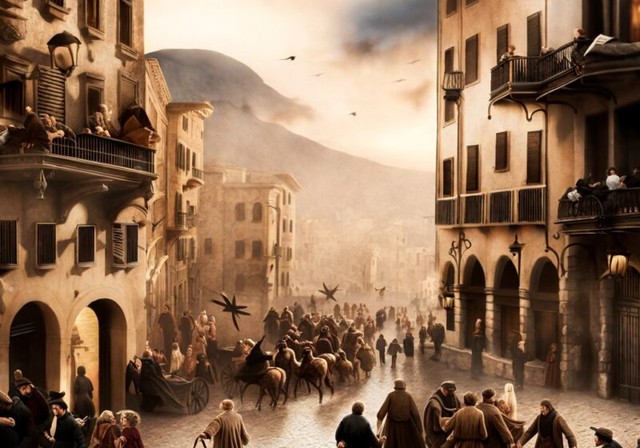Welcome to Amalfi Coast Resort, where history and luxury meet in a timeless setting. Our identity is deeply connected to Villa Amalia, a historic residence that tells centuries of fascinating stories and personalities
We invite everyone to discover the magic of Villa Amalia and become part of its ongoing story. At Amalfi Coast Resort, tradition meets modern comfort to create an unforgettable experience.
Villa Amalia: Timeless History, Tradition, and Luxury
A refuge to ascape the plagu
With the arrival of King Charles III in the peaceful and enchanting area of Rotolo, fleeing from the plague that struck Naples, many aristocrats followed his example. Drawn by the natural beauty and mild climate of the area, they decided to establish their summer residences there. In a short time, the landscape of Rotolo transformed into a collection of splendid villas, elegant historic homes that offered refuge from the scorching summer heat of Naples. These aristocrats not only appreciated the beauty of Rotolo, but also helped to turn it into an iconic place, where architectural elegance and natural serenity come together in a unique and refined atmosphere…


The vision of a Villa and its construction
During a stroll, Prince Filippo Maria D’ Aragona was captivated by the village of Rotolo and its breathtaking sea views. Inspired by the beauty of the landscape, he decided to build a villa right there.The city of Cava, renowned since the Roman Empire for its mild and sheltered climate, offered the Prince an ideal refuge. During his stay, he strolled in the ancient village of Casaburi (now Rotolo), attended Mass at the small church of San Giovanni, built in 1300 by Pope Boniface X, and enjoyed the spectacular flights of migratory pigeons—a popular pastime among the high aristocracy of Naples and Salerno.
To realize his vision, the Prince entrusted the project to his nephew, architect Giovanni Paolo di Giacomo De Lombardi, Baron of Ogliastro Cilento. An expert in fortifications, De Lombardi created a villa innovative in both design and functionality.
Innovation and Art: The Cistern and Potable Wate
De Lombardi devised an innovative cylindrical cistern for collecting rainwater, using local materials like fine limestone powder and a system of clay pipes shaped like funnels. This allowed potable water to be brought directly into the kitchen, revolutionizing domestic water use at the timeThe structure comprised a ground floor with three rooms used as a stable for four horses, a carriage house, and an entrance to the upper floor. The upper floor featured seven rooms, including a kitchen and a bathroom. A terrace separated the villa from a two-story annex where the servants lived.


Villa Amalia Through the Centuries
A Protagonist of History
•The French Revolution (1799): Requisitioned by General Watrin, the villa became the headquarters of the French occupation forces.
•The Revolution of 1848: Hosted counter-revolutionary figures like Captain Filippo De Julis. Gianluigi D’Aragona, owner and patriot, was imprisoned and then saved by the return of King Ferdinand.
Preserving History and Embracing the Future
After World War I, the villa changed ownership several times, gradually losing its original splendor and its connection with the neapolitan aristocracy
In 1982, Professor Antonio Lambiase purchased the villa from the Fiorentino heirs. Immediately afterward, he invested significant resources over four consecutive years in the renovation and expansion of the property, taking on the roles of designer, director, and building contractor. Upon completion of the work, he dedicated the villa to his wife, renaming it “Villa Amalia.”

Today, the villa has returned to its former glory. With love and dedication, Professor Lambiase succeeded in restoring to Villa Amalia the same desire to live happily, the elegance in welcoming those who wish to enter, and the solemn silence in which, once upon a time, numerous guests, in centuries, listened to the sweet love songs in his small town.
